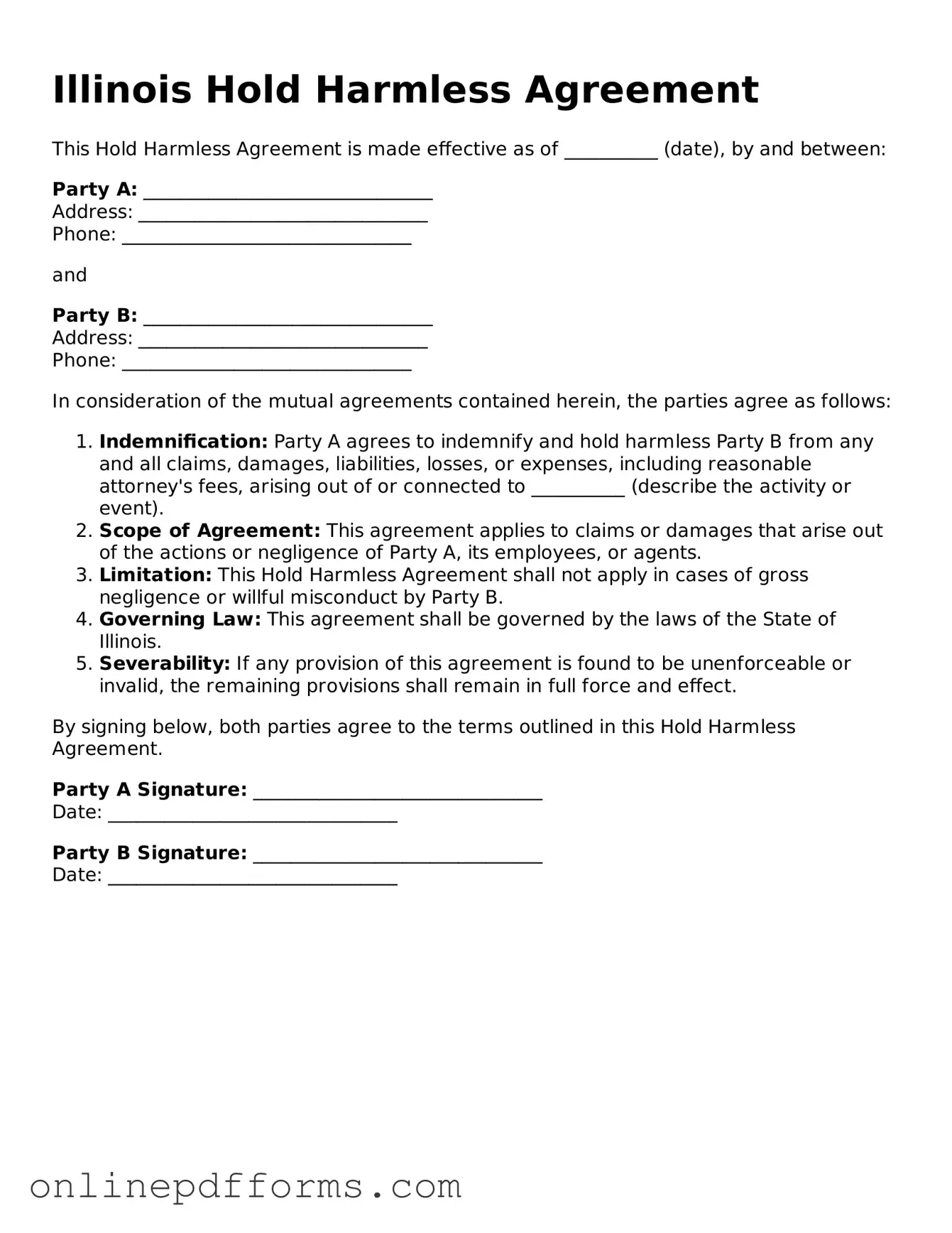The Indemnity Agreement is similar to the Illinois Hold Harmless Agreement in that both documents are designed to protect one party from legal liability. An Indemnity Agreement typically involves one party agreeing to compensate another for any losses or damages incurred. This document often outlines specific scenarios where the indemnifying party will assume responsibility, making it clear what situations are covered. Both agreements emphasize the importance of risk management and liability allocation between the parties involved.
The Liability Waiver serves a similar purpose by releasing one party from responsibility for injuries or damages that may occur during an event or activity. Individuals often sign liability waivers before participating in activities like sports or recreational events. While a Hold Harmless Agreement may involve a broader scope of liability, a Liability Waiver specifically focuses on personal injury and can limit the ability to sue for negligence. Both documents aim to inform participants of risks and protect organizers from potential legal claims.
The Release of Liability Agreement is closely related, as it also seeks to absolve one party of responsibility for certain risks. This document is commonly used in situations where participants acknowledge the inherent dangers of an activity, such as skydiving or rock climbing. Similar to the Hold Harmless Agreement, it requires participants to understand and accept the risks involved. However, the Release of Liability Agreement often emphasizes the voluntary nature of participation and the acknowledgment of risks associated with the activity.
The Non-Disclosure Agreement (NDA) shares some similarities in terms of protecting one party's interests, though it focuses on confidentiality rather than liability. An NDA is used to ensure that sensitive information shared between parties remains private. While the Hold Harmless Agreement protects against liability, the NDA protects against the unauthorized sharing of proprietary information. Both documents create a framework for trust and accountability between parties, although they address different types of risks.
The Service Agreement can also be compared to the Illinois Hold Harmless Agreement. This document outlines the terms and conditions under which services are provided, including the responsibilities of each party. While it does not specifically focus on liability, it may include clauses that limit liability or require one party to indemnify the other in case of claims arising from the services rendered. Both documents aim to clarify expectations and responsibilities, ultimately reducing the potential for disputes.
The Construction Contract often includes Hold Harmless provisions as part of its broader terms. This type of contract governs the relationship between contractors and property owners, outlining the scope of work, payment terms, and liability issues. Similar to the Hold Harmless Agreement, it can include clauses that protect one party from claims arising from the construction work. Both documents emphasize risk management, particularly in industries where physical work is performed.
The Partnership Agreement can also bear similarities to the Illinois Hold Harmless Agreement. This document outlines the terms of a partnership, including each partner's responsibilities and liabilities. While it primarily focuses on the operational aspects of a partnership, it may include indemnification clauses to protect partners from liabilities incurred by the business. Both agreements stress the importance of clearly defined roles and responsibilities to mitigate potential conflicts and legal issues.
